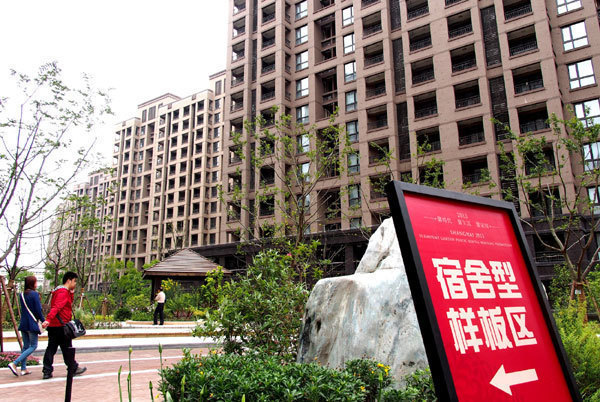

China has made great efforts to improve housing conditions from 2016 to 2020, the period covered by the 13th Five-Year Plan, with the rebuilding of housing units in run-down urban areas exceeding 23 million as of August 2020.

Prospective tenants visit the public rental housing at the Xinyue apartments in Shanghai. (Photo/ Xinhua)
The figure has gone beyond the target set for the 13th Five-Year Plan that aimed to renovate 20 million homes. This means that some 50 million residents have bid farewell to poor living conditions in run-down areas and started a new life in spacious and comfortable houses in resettlement areas.
In addition, the country has also made great strides in constructing public rental housing units and providing public rental subsidies, benefiting those on subsistence allowances and those with a low income, along with migrant workers who are in need of housing.
In Licang district, Qingdao city, east China’s Shandong province, 8,421 households alone have enjoyed public rental housing security over the past five years. By the end of 2019, more than 38 million people living in poverty across the country had moved into public rental housing units, and nearly 22 million people living in poverty had received public rental subsidies nationwide.
Efforts have also been made to renovate old urban residential communities and dilapidated rural houses, even installing elevators in old urban residential buildings to make it more convenient for the elderly.
Thanks to the government’s efforts, by the end of 2019, 62 million rural residents had been able to live in decent houses from dilapidated homes. This year, China’s plan to renovate old urban residential communities will benefit 7 million households.
With sufficient measures and policy options, the housing security system will continuously improve in the future, and the goal of ensuring housing for all will surely be met.
 Fire brigade in Shanghai holds group wedding
Fire brigade in Shanghai holds group wedding Tourists enjoy ice sculptures in Datan Town, north China
Tourists enjoy ice sculptures in Datan Town, north China Sunset scenery of Dayan Pagoda in Xi'an
Sunset scenery of Dayan Pagoda in Xi'an Tourists have fun at scenic spot in Nanlong Town, NW China
Tourists have fun at scenic spot in Nanlong Town, NW China Harbin attracts tourists by making best use of ice in winter
Harbin attracts tourists by making best use of ice in winter In pics: FIS Alpine Ski Women's World Cup Slalom
In pics: FIS Alpine Ski Women's World Cup Slalom Black-necked cranes rest at reservoir in Lhunzhub County, Lhasa
Black-necked cranes rest at reservoir in Lhunzhub County, Lhasa China's FAST telescope will be available to foreign scientists in April
China's FAST telescope will be available to foreign scientists in April "She power" plays indispensable role in poverty alleviation
"She power" plays indispensable role in poverty alleviation Top 10 world news events of People's Daily in 2020
Top 10 world news events of People's Daily in 2020 Top 10 China news events of People's Daily in 2020
Top 10 China news events of People's Daily in 2020 Top 10 media buzzwords of 2020
Top 10 media buzzwords of 2020 Year-ender:10 major tourism stories of 2020
Year-ender:10 major tourism stories of 2020 No interference in Venezuelan issues
No interference in Venezuelan issues
 Biz prepares for trade spat
Biz prepares for trade spat
 Broadcasting Continent
Broadcasting Continent Australia wins Chinese CEOs as US loses
Australia wins Chinese CEOs as US loses